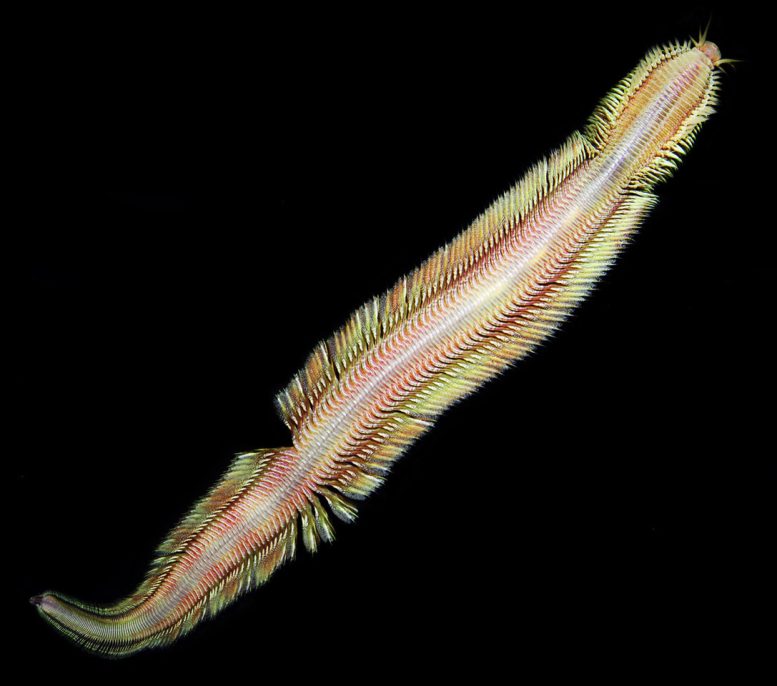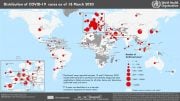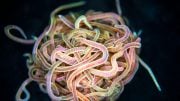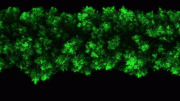
A live male specimen of the new species of deep-sea worm, named Pectinereis strickrotti after the lead Alvin pilot, Bruce Strickrott of WHOI who helped discover it. Its feathery appendages are called parapodia and carry the worm’s gills. Credit: Ekin Tilic
The discovery of this creature increases the total count of new species identified by researchers exploring these seemingly inhospitable ecosystems to 48.
Greg Rouse, a marine biologist at UC San Diego’s Scripps Institution of Oceanography, and other researchers have identified a previously unknown species of deep-sea worm residing near a methane seep located approximately 50 kilometers (30 miles) away from Costa Rica’s Pacific coast. Rouse, curator of the Scripps Benthic Invertebrate Collection, co-authored a study describing the new species in the journal PLOS ONE.
The worm, named Pectinereis strickrotti, has an elongated body that is flanked by a row of feathery, gill-tipped appendages called parapodia on either side, and Rouse said its sinuous swimming reminded him of a snake. The species was named after Woods Hole Oceanographic Institution’s Bruce Strickrott, lead pilot for the famed deep-sea submersible Alvin, who Rouse said was instrumental in the effort to locate and collect the creature. The research was supported by the National Science Foundation.
Exploring Costa Rican Methane Seeps
Rouse and his colleagues have encountered roughly 450 species at the Costa Rican methane seeps since 2009, with this latest discovery bringing the number of those species that were new to science to 48. These impressive stats underscore how much more there is left to learn about these ecosystems as well as their biological importance, said Rouse.
Methane seeps are parts of the seafloor where the powerful greenhouse gas methane escapes from rocks or sediment on the seafloor in the form of bubbles. Unlike deep-sea hydrothermal vents, methane seeps are typically not hotter than the surrounding water. But like hydrothermal vents, methane seep ecosystems are fueled by chemical energy rather than sunlight. This is because some microbes have evolved the ability to consume methane. The microbes that can make methane into food create the base of a food web that at the Costa Rican seeps is dominated by mussels, crabs, and soft-bodied polychaete worms like this new species, said Rouse.
The Discovery Journey
Strickrott and Rouse first encountered the new species in 2009 at a depth of around 1,000 meters (3,280 feet) during a dive in the Alvin human-occupied submersible, which is operated by the Woods Hole Oceanographic Institution and owned by the U.S. Navy.
“We saw two worms near each other about a sub’s length away swimming just off the bottom,” said Strickrott. “We couldn’t see them well and tried to creep in for a closer look, but it’s hard to creep in a submarine and we spooked them.”
Finally, in 2018 the team was able to return to Costa Rica’s methane seeps with Alvin. On a dive to the same spot the worm was first sighted, known as Mound 12, Strickrott was astounded to encounter six or more individuals of the unidentified species they first saw there nearly a decade earlier. For some reason, the worms were much less skittish than they were in 2009 and, using a five-chambered vacuum canister device on Alvin that Strickrott calls the “slurp gun,” they carefully collected several specimens as well as images and video – enough to formally describe what proved to be a new species.
“The way this thing moved was so graceful, I thought it looked like a living magic carpet,” said Strickrott. “I’m honored that Greg [Rouse] saw fit to name this species after me, it means a lot.”
Unique Characteristics of Pectinereis strickrotti
Pectinereis strickrotti is a 10-centimeter-long (4-inch) member of the ragworm family (Nereididae). Ragworms are a group of around 500 species of segmented, mostly-marine worms that look a bit like a cross between a centipede and an earthworm. They have elongated bodies with rows of bristled parapodia on their sides and a hidden set of pincer-shaped jaws that can be extruded for feeding. Many species of ragworm also have two distinct life stages: atoke and epitoke. In these species, the worm spends most of its life on the seafloor, often in a burrow, as a sexually immature atoke, but in their life’s final act, they transform into sexually mature epitokes that swim up off the bottom into the water column to find mates and spawn.
The team was able to collect three male Pectinereis strickrotti epitokes and part of one female. Following their successful collection, the team used the specimens to conduct anatomical analysis and to study the worm’s DNA to establish its evolutionary relationships within the ragworm family. The specimens now reside in Scripps’ Benthic Invertebrate Collection and the Museo de Zoología at the Universidad de Costa Rica.
Compared to most ragworms, Pectinereis strickrotti is unusual in several ways. First, it lives in the deep sea, while the majority of its evolutionary kin inhabit shallower waters. Second, its parapodia are covered in gills, while most ragworms absorb oxygen through their parapodia without the aid of true gills. The males had large spines at the end of their tails, which Rouse said might have something to do with reproduction but would require further study. Finally, owing to the total darkness at 1,000 meters (3,280 feet) under the sea, the new species is blind. Rouse said the worms probably have keen senses of smell and touch to help them navigate their inky world.
Pectinereis strickrotti has robust, even fearsome-looking jaws, but Rouse said their diet is still unknown and that the species could just as easily be feeding on bacteria as larger fare like other worms. Though its coloration would be a moot point in life, given its pitch-black habitat, Rouse said the worm appeared rosy under Alvin’s lights, and that this was probably due to the color of its blood.
“We’ve spent years trying to name and describe the biodiversity of the deep sea,” said Rouse. “At this point, we have found more new species than we have time to name and describe. It just shows how much undiscovered biodiversity is out there. We need to keep exploring the deep sea and to protect it.”
Rouse and other Scripps researchers will be heading back out to sea later this year in hopes of making even more deep-sea discoveries at methane seeps off the coasts of Alaska and Chile.
Reference: “A remarkable new deep-sea nereidid (Annelida: Nereididae) with gills” by Tulio F. Villalobos-Guerrero, Sonja Huč, Ekin Tilic, Avery S. Hiley and Greg W. Rouse, 6 March 2024, PLOS ONE.
DOI: 10.1371/journal.pone.0297961
In addition to Rouse, Sonja Huč, Avery Hiley, and Ekin Tilic of Scripps contributed to the study. Tulio Villalobos-Guerrero of the Centro de Investigación Científica y de Educación Superior de Ensenada is the study’s first author and conducted the primary anatomical analysis.








Be the first to comment on "Scientists Discover Strange Creature in a Seemingly Inhospitable Ecosystem"